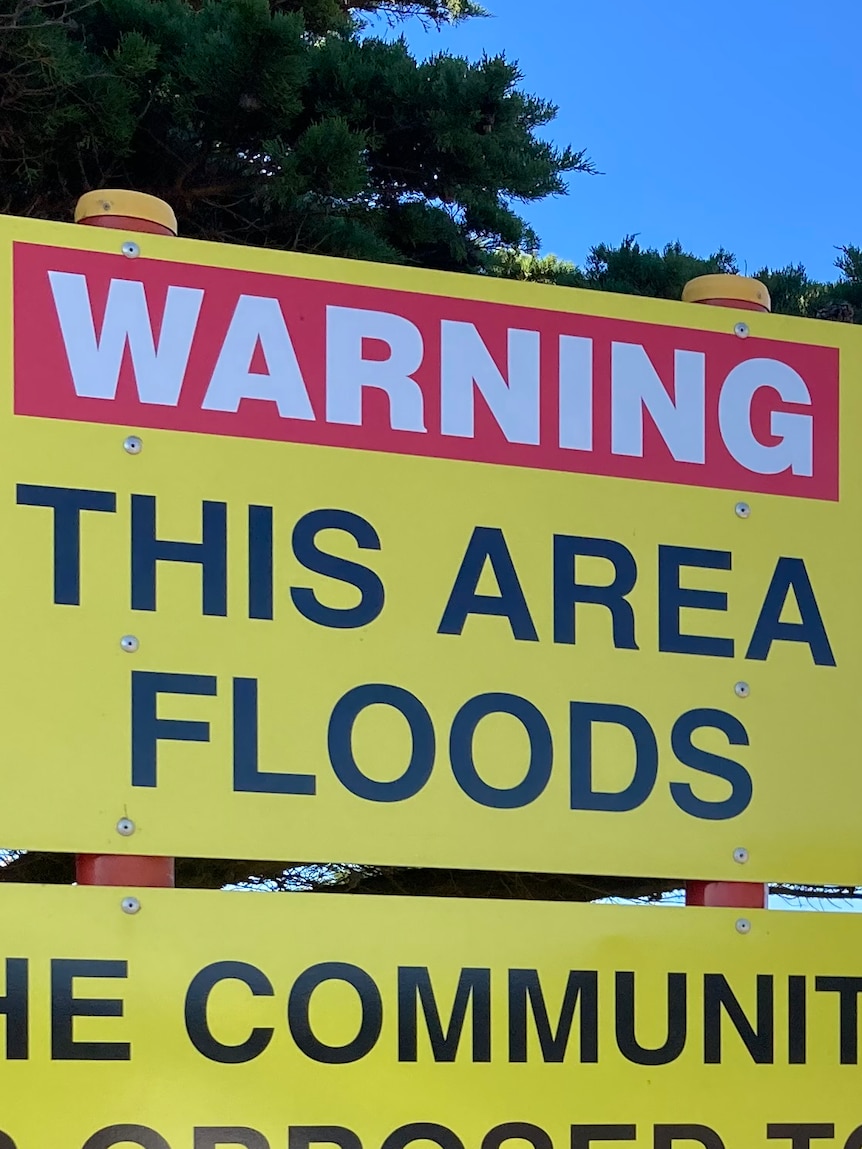Warnings, watches, minor, moderate, major, advice, watch and act, emergency warning, evacuate now.
There are a plethora of warnings issued during a flood and it can be completely overwhelming.
Here’s a breakdown of what they mean and how you should respond.
But they all come with the caveat that sometimes you just won’t get a warning.
Warnings from the BOM
The Bureau of Meteorology issues flood watches and flood warnings for riverine flooding.
Riverine flooding is when rivers and creeks rise, usually six hours or more after it starts raining.
A flood watch indicates that flooding is possible. Think of it as a heads up.
Flood watches can be issued up to four days in advance of a flood.
They are issued when that kind of lead time is possible, such as for current riverine flooding being experienced along the Murray and the Darling.
A flood warning is given when flooding is expected and will provide information about the level of flood expected, be it minor, moderate or major.
Flood warning levels given by the Bureau of Meteorology include:
Minor flooding
If the water level reaches the minor flood level, it causes inconvenience. Low-lying areas next to water courses are inundated. Minor roads may be closed and low-level bridges submerged. In urban areas flooding may affect some backyards and buildings below floor level as well as bicycle and pedestrian paths. In rural areas removal of livestock and equipment may be required.
Moderate flooding
If the water level reaches the moderate flood level, the area of inundation is larger. Main traffic routes may be affected. Some buildings may be affected above floor level. Evacuation may be required. In rural areas removal of livestock is necessary.
Major flooding
If the water level reaches the major flood level large areas are inundated. Many buildings may be affected above floor level. Properties and towns are likely to be isolated and major rail and traffic routes closed. Evacuation may be required. Utility services may be affected.
But it is a different ball game with flash floods that hit within six hours of rain.
Water Technology principal Neil Dufty said the BOM struggled, “as would any agency”, with anything under six hours.
The timing and location of flash flooding depends on where exactly the rain falls and how heavily.
Both things that are incredibly difficult to forecast with accuracy.
Natural Hazards Research Australia cheif executive Andrew Gissing said people living in areas affected by overland flooding and flash flooding should be mindful of warnings from the bureau and emergency services about heavy rainfall.
“So where they see severe thunderstorm warnings, which warn of flash flooding and heavy rainfall, or severe weather warnings, which also warn of heavy rainfall and flash flooding, that’s really their trigger to say, ‘OK, I need to be on alert here, I need to be safe’,” he said.
Warnings from the SES
Emergency services around the country also issue additional warnings.
The warnings focus on the expected impacts of the weather and how to respond.
Each state and territory previously had its own warnings but they are currently transitioning to using the Australian Warning System.
The new system is the same across the country and has three levels and will give advice for what you should do at each level.
Examples of actions that will be given at each level, as outlined by the NSW SES, include:
Advice — an incident has started. Stay up to date in case the situation changes.
- Stay informed
- Monitor conditions
- Reduced threat: return with caution
Watch and Act — conditions are changing and you need to start taking action now to protect you and your family.
- Do not enter floodwater
- Prepare to evacuate
- Prepare to isolate
- Avoid the area
Emergency Warning — the highest level of warning. You may be in danger and need to take action immediately.
- Evacuate now / Evacuate before [time]
- Shelter now
- Move to higher ground
How will you get the warnings?
As the emergency broadcaster, the ABC passes along warnings through local ABC radio.
This is often the most reliable source of communications during a major disaster and is why you are encouraged to put a battery powered radio in your emergency kit.
You can also check the ABC Emergency website which keeps track of the emergency warnings from across the country.
The ABC also operates emergency social media updates on local ABC Facebook pages.
You can keep up with all of the Bureau of Meteorology’s warnings on their website and they also have social media pages with regular updates.
Each of the states and territories’ emergency services issue alerts and updates on their webpages.
Many local emergency services and councils issue flood warnings and alerts over the phone network.
They can come in the form of a text or an automated phone call.
When there is enough notice, the SES will often attempt to doorknock and personally warn residents of incoming floods.
But they can’t always reach everyone.
Do not rely on getting a knock on your door.
None of these communication methods are guaranteed to workd, so look for multiple sources of official information and be careful if you live in, or are travelling through, a flood prone area.
Will you always get a warning?
No.
You will not always get a warning.
“Unfortunately, in some of those circumstances, as we’ve seen in previous floods, emergency services cannot be on every street during severe flooding,” Dr Gissing said.
“It’s again a reminder about being well prepared in the first place so you can be resilient to that.”
Loading form…
Posted , updated




